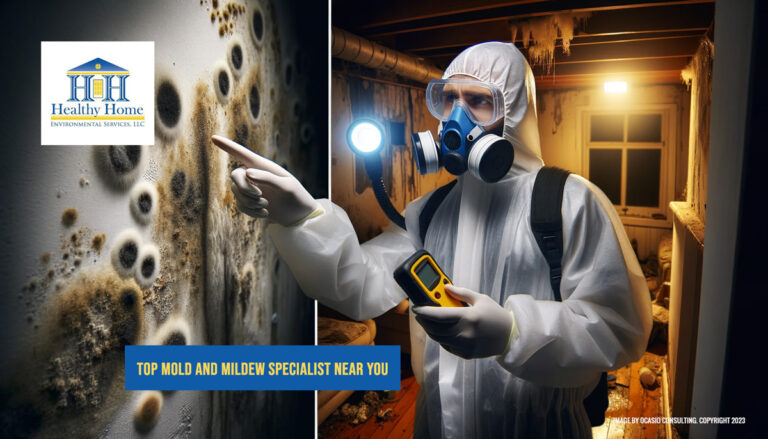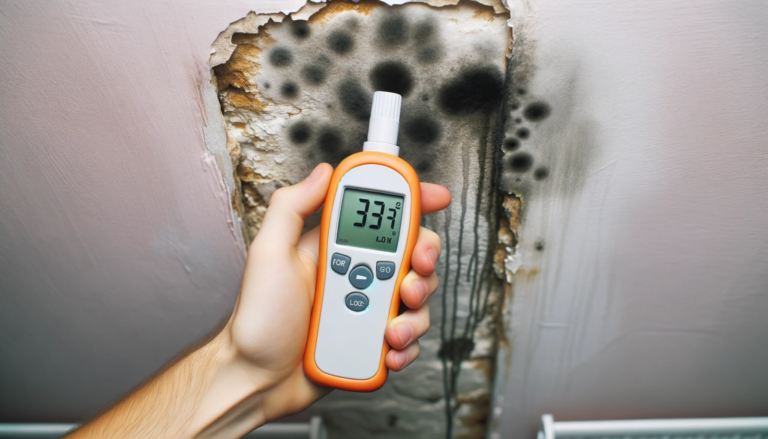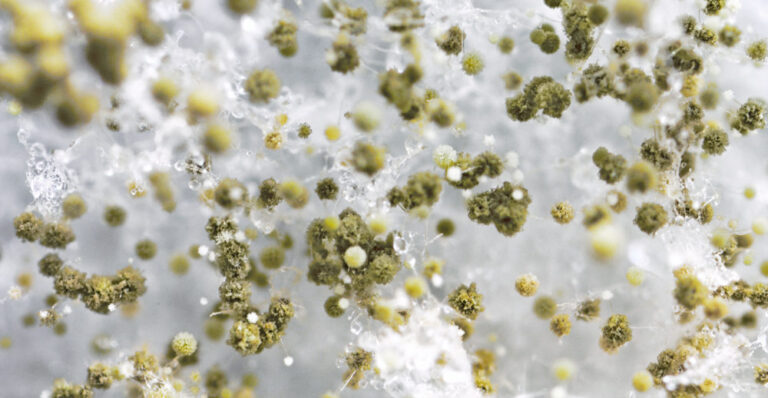Ensure Air Quality With Volatile Organic Compound Testing

The sanctity of the air we breathe within the confines of our own walls is undebatable. At the very core of our commitment to promoting health and environmental preservation, we place an unerring focus on indoor air quality.
The silent yet potentially deleterious presence of Volatile Organic Compounds (VOCs) in residential and commercial domains underscores the necessity of vigilant monitoring and control. We leverage VOC testing services as an indispensable tool to diagnose and mend the quality of the air encircling us.
VOC air testing transcends mere regulatory compliance. It is about creating and maintaining a habitat that fosters well-being and productivity—a cause we are deeply passionate about.
Each breath should fortify one’s health, not compromise it; thus, we staunchly advocate for volatile organic compound testing as a bastion for environmental and public health.
Key Takeaways
- Urgent need for volatile organic compound testing in living and working spaces.
- Essential role of indoor air quality in upholding health and well-being.
- VOC testing services offer extensive analysis for safer, cleaner environments.
- VOC air testing is a strategic approach to detecting and mitigating airborne pollutants.
- Unyielding dedication to enhancing health and environment through superior air quality standards.
Understanding the Basics of Volatile Organic Compounds
In our ongoing exploration of environmental health, we turn our attention to a prevalent yet often underestimated class of air pollutants known as volatile organic compounds (VOCs). These organic chemicals are not just a matter of scientific interest, but they are a component of indoor air that can significantly impact our well-being.
Defining VOCs and Their Impact on Indoor Air Quality
The term VOC encompasses a wide range of organic chemical substances that are characterized by high vapor pressure at room temperature, making them particularly adept at evaporation. This ability to transit swiftly from solid or liquid form into a gas translates directly to increased voc emissions within our living and working environments. Counterintuitively, given their pervasive nature, these compounds exhibit low water solubility, ensuring their longevity in our ambient air.
VOCs, due to their volatility, are of significant concern in terms of indoor air quality testing. They are capable of compromising environmental integrity and potentially engendering a variety of adverse health effects of VOCs, ranging from mild irritation to more severe responses upon prolonged exposure.
Common Sources of VOC Emissions in Everyday Life
Our daily routines, often unknowingly, involve interactions with products and materials that are sources of VOCs. From the simple act of applying a deodorant to the more complex activities such as painting a room, we encounter emission of VOCs. Common items like cleaning agents, air fresheners, and building supplies directly contribute to the indoor VOC levels.
The knowledge of these sources is paramount in identifying and controlling the presence of potentially harmful gases. Moreover, it lays the groundwork for implementing preventive measures to ensure a healthier, safer indoor atmosphere.
The Scientific Mechanics of VOCs: Vapor Pressure and Water Solubility
Understanding VOCs on a molecular level permits an insightful perspective on their interaction with our environment. Their inherent high vapor pressure predisposes them to exist as a gas even at lower temperatures, which is a factor in their ubiquitous presence in the air that surrounds us. Meanwhile, their low water solubility shields them from easy removal through conventional water-based cleaning or air filtering methods. These characteristics necessitate specialized approaches to both detect and reduce the presence of VOCs in our indoor and outdoor spaces.

The Importance of Measuring TVOC Levels in Buildings
Ensuring the health and safety of indoor environments is a key concern in modern building management. Our steadfast efforts in volatile organic compound analysis are driven by our understanding that a comprehensive assessment of air quality is vital. It is through measuring TVOC, or total volatile organic compounds, that we grasp a clearer picture of the air we respirate daily.
TVOC represents an inclusive index of the myriad of volatile compounds present within an indoor space. This inherent complexity of varied chemicals necessitates the application of robust quality testing procedures. The execution of these procedures not only satisfies the stringent criteria set forth by the Environmental Protection Agency (EPA) but serves as a proactive step towards safeguarding public health.
What TVOC Readings Indicate About Your Indoor Environment
Our interpretative volatile organic compound analysis transcends mere numerical expression; it provides nuanced insight into the atmospheric conditions of a space. Elevated levels of TVOC can signal inadequate ventilation, the presence of off-gassing materials, or other sources of pollution, which could jeopardize individual wellbeing. In our role, these readings guide us in implementing the necessary remedial actions to mitigate any detected risks.
Different Standards and Guidelines for TVOC
It is important to note, however, that the scope of TVOC encompasses a broad spectrum of compounds. Therefore, the standards and guidelines may vary in defining what constitutes TVOC. We align with a range of protocols, from those set by the World Health Organization (WHO) to the International Organization for Standardization (ISO), and we take into careful consideration the studies by researchers such as Mølhave et al. Each has contributed far-reaching perspectives that inform our testing is performed.
| Standard/Guideline | TVOC Acceptable Concentration | Notes |
|---|---|---|
| RESET | Focuses on high-performance environments | |
| WELL Building Standard | Emphasizes specific harmful VOC concentrations | |
| Fitwel Protocol | Measures as per Enhanced Indoor Air Quality Testing |
Our philosophy is to ensure that testing is performed with precision and that the maintenance of TVOC levels remains well within the recommended thresholds outlined above. By doing so, our commitment to fostering healthy spaces is realized—spaces that are not only in compliance with prevailing standards but also are optimal for the occupants’ wellness.
Volatile Organic Compound Testing: An Overview
Within the realm of environmental health, volatile organic compound testing is a critical endeavor. Our engagement in providing comprehensive voc analysis reflects our dedication to ensuring the safety and well-being of individuals in indoor spaces. It’s not just a service; it’s a shield against the potential impacts of silent airborne chemicals like formaldehyde and benzene on human health.
Employing a variety of voc testing methods allows us to comprehensively evaluate the volatile content in environments ranging from residential homes to commercial office spaces. Our sophisticated testing apparatus, including the use of gas chromatography-mass spectrometry (GC-MS), stands as the bastion of modern voc emission testing, enabling us to detect, identify, and quantify VOCs with unmatched precision.
Our testing begins with the collection of air samples which are then subjected to rigorous voc analysis to uncover a detailed composition of the airborne volatile organic compounds. Each identified compound is scrutinized, especially those that are notorious for their adverse health effects. By analyzing the results against established benchmarks and guidelines, we craft bespoke recommendations for our clients to improve air quality and reduce voc emission levels.
When it comes to safeguarding indoor air quality, precision in testing is non-negotiable. Our attention to detail ensures that every possible source and type of VOC is accounted for, and any trace of compromised air quality is addressed promptly and thoroughly.
- Gas Chromatography: Separates complex mixtures of VOCs.
- Mass Spectrometry: Identifies and quantifies VOCs based on mass-to-charge ratio.
- VOC Emission Testing: Measures the release of VOCs from various materials and products.
In navigating the complexities of volatile organic compound testing, we are continuously refining our process to meet the evolving needs of our clients and respond to the dynamic regulations that govern indoor air quality. The result is an unparalleled commitment to delivering actionable insights that promote healthier, safer indoor environments for all.

Identifying Sources of VOCs in Your Home and Workplace
As champions of environmental health, we constantly strive to educate and enlighten our communities about the sources and dangers of volatile organic compounds (VOCs). In the spaces where we live and work, a myriad of products exist that emit VOCs into our air, affecting our well-being and contributing to indoor pollution. Today, let us delve into the specifics of these primary sources and discover how we can mitigate their impact with intelligent choices and vigilance.
From Paint to Cleaners: Unmasking the Common Culprits
The array of everyday items that are VOC sources might be surprising. Paint, one of the most substantial contributors to indoor VOC emissions, releases compounds long after the drying process. Cleaners are also major offenders, with their usage often causing spikes in VOC levels due to off-gassing.
Simple actions, like selecting low-VOC or no-VOC paints and opting for environmentally friendly cleaners, can substantially decrease VOC exposure. Beyond these, adhesives, sealants, and a variety of other maintenance supplies can surreptitiously contribute to poor indoor air quality. Awareness is the first step: by identifying these common culprits, we can take charge of our environment and our health.
Indoor Versus Outdoor VOCs: Understanding the Differences
While we may have a heightened awareness of indoor VOCs, it is equally essential to recognize that outdoor VOCs play a different but impactful role. Although typically at safer levels for direct inhalation, outdoor VOCs can contribute significantly to photochemical smog, a problem primarily seen in urban and industrial areas.
It is in the stark contrast of the outdoor VOCs’ tendency to dissipate in the open air versus the indoor VOCs’ concentration in enclosed spaces that we find our focus for volatile organic compound testing. Utilizing state-of-the-art voc testing equipment and engaging services from a reliable voc testing lab, we can measure and address these emissions effectively. With our guidance, homes and workplaces can transform into sanctuaries of clean air, promoting better health and a more environmentally-conscious lifestyle.
For those concerned about air quality, being informed is the first step. By identifying the VOC sources and distinguishing between the effects of indoor and outdoor VOCs, we can implement measures such as proper ventilation strategies and the choice of safer products to foster spaces that support the welfare of all who inhabit them. At the heart of our mission is a commitment to a future where clean air is not a luxury, but a fundamental standard we can all expect and enjoy.
Health Implications of VOC Exposure
When it comes to human health, the presence of VOCs include a wide array of substances with various effects, troubling indoor environments with every emitted breath of air. Recognizing the health effects of VOCs is critical in promoting and sustaining high levels of indoor air quality and ensuring that our habitats are sanctuaries of wellness and safety. Through vigilant voc air testing, we aim to curtail the adverse emissions detrimental to our well-being.
Short-Term Effects: Irritation to Allergic Reactions
The impact of VOCs on indoor environments can be immediate and distressing. Direct encounters often induce eye, nose, and throat irritation, a discomfort surpassed only by the potential for headaches, nausea, and even allergic skin reactions or fatigue. These symptoms are tell-tale signs, waving a red flag that VOC levels within a space need addressing—a task that our voc air testing services proficiently undertake.
Chronic Risks: Organ Damage and Carcinogenic Potentials
Beyond transient symptoms, some VOCs wield the potential for lasting harm. Compounds such as formaldehyde and benzene carry the heavy burden of being implicated in organ damage or even possessing carcinogenic potentials. These threats impart a sense of urgency to test, track and eliminate these invisible assailants from our air. Through concerted effort and responsible management, including adequate ventilation and prudent product usage, we can defend ourselves against these insidious health risks.
Sustained or high-level exposure to certain VOCs may be more than a mere annoyance—it could implicate our very life’s longevity and quality. Hence, it behooves us to employ every measure, such as routine voc air testing, to keep such perils at bay.
Advancements in VOC Testing Methods
In our collective journey towards environmental vigilance, the quest for precision in the field of volatile organic compound analysis has seen a remarkable surge in technological progress. We pride ourselves on staying at the forefront of these advancements, harnessing the latest in voc testing methods to deliver exacting standards of environmental assessment.
Gas Chromatography and Mass Spectrometry for Precise Analysis
The integration of gas chromatography (GC) with mass spectrometry (MS) forms a cornerstone in our arsenal of detection techniques. This powerful combination, known in the industry as GC-MS, is lauded for its ability to separate and identify even the most complex mixtures of VOCs. Its unparalleled specificity allows us to meticulously analyze air samples and identify individual compounds based on their unique mass-to-charge ratios.
By employing the cutting-edge precision of GC-MS, we ensure that our analysis provides detailed insights into indoor air quality, allowing us to protect health and well-being with actionable data.
The Role of Thermal Desorption in VOC Detection
Complementing our suite of analytical methods, thermal desorption has become instrumental in enhancing our VOC detection capabilities. This technique liberates VOCs trapped within absorbed media, such as building materials and air filters, allowing for a comprehensive evaluation of the environment’s VOC profile. The desorbed samples are then ready for subsequent analysis by GC-MS, ensuring a meticulous survey of the volatile landmarks in our atmosphere.
| Detection Method | Technique | Application |
|---|---|---|
| Gas Chromatography | Separates VOC mixtures | Analysis of complex air samples |
| Mass Spectrometry | Identifies based on mass-to-charge ratio | Pinpointing specific VOCs |
| Thermal Desorption | Liberates VOCs for analysis | Examines absorbed VOCs in materials |
Our command of spectrometry and the meticulous detection method provided by thermal desorption signify our commitment to delivering a truly comprehensive approach to voc testing. Our relentless pursuit of excellence in environmental stewardship is marked by our embrace of these scientific innovations, each contributing a critical piece to the intricate puzzle of VOC management and control.

Protective Measures Against VOCs in the Indoors
In our quest for superior indoor air quality, we recognize the importance of minimizing volatile organic compounds (VOCs) to maintain a healthy living space. Our approach to ensuring a low-VOC environment encompasses two pivotal strategies: enhancing ventilation to facilitate the dispersal of these volatiles, and selecting low-VOC products and materials to reduce the potential for organic pollutants in the air we breathe.
Effective Ventilation Strategies to Reduce VOC Concentrations
First and foremost, we champion the implementation of effective ventilation systems. Drawing on fresh external air dilutes the concentration of VOCs indoors, a vital step towards purifying the air within our private and public spaces. From simple practices like keeping windows open to incorporating advanced ventilation technologies, ensuring a steady supply of fresh air is a foundational aspect of our voc emission testing and reduction protocol.
To illustrate, let’s consider the role of mechanical ventilators which swap indoor air with filtered outdoor air. Such systems are instrumental in consistently replacing VOC-laden air with a healthier alternative. They stand as an exemplary model in combining efficacy with seamless integration into the architecture of modern buildings.
Smart Choices: Low-VOC Products and Materials
Parallel to implementing smart ventilation solutions, we also emphasize the selection of low-VOC products. The choices we make regarding the materials and products used in our homes, workplaces, and schools can significantly lower the VOC profile of a space. For instance, choosing low-VOC paints, adhesives, and sealants goes a long way in curbing the emission of harmful volatiles.
Our commitment extends beyond just recommendation; we further assist in identifying such products through our voc testing services, ensuring that our clients are well-informed and able to make decisions that contribute to a healthier indoor atmosphere. Here is a concise table showcasing the benefits and effective uses of low-VOC products:
| Product Type | Low-VOC Benefit | Recommended Use |
|---|---|---|
| Paints and Primers | Reduces off-gassing duration | Interior walls and ceilings |
| Adhesives and Sealants | Minimizes volatile emissions during application | Flooring, tile work, insulation |
| Building Materials | Lessens long-term VOC release from structures | New construction and renovations |
In conclusion, by embracing these strategies of enhancing ventilation and selecting low-VOC products, we uphold our commitment to promoting an environment that enhances wellness and stands vigilant against voc emission testing and exposure.
Ensuring Accurate VOC Testing with Professional Services
At the heart of safeguarding indoor air quality lies the critical process of volatile organic compound testing. We, as environmental health professionals, are committed to delivering voc analysis that adheres to the highest standards of accuracy and reliability. This commitment mandates that we partner with top-tier voc testing labs and deploy state-of-the-art voc testing equipment.
Choosing the Right VOC Testing Lab and Equipment
Our selection process for a voc testing lab is meticulous and driven by the objective to ensure flawless functioning of voc testing services. We place our trust in labs equipped with cutting-edge technology that can precisely identify and quantify VOCs. The right lab is not just capable of performing specialized voc analysis, but also interprets the data in a meaningful way that guides our interventions for improving air quality indoors.
The voc testing equipment chosen plays a vital role in the integrity of our testing approaches. We are aware that only the most sophisticated tools can provide the level of detail needed to make proactive environmental health decisions. Therefore, our equipment selection is always in line with the latest advancements in volatile organic compound testing methodologies.
Certifications and Standards Compliance in VOC Analysis
Guaranteeing precise voc analysis is more than operating high-grade equipment; it’s also about being compliant with regulatory norms and certifications that reinforce our testing’s credibility. We ensure that our operations adhere to standards compliance, strictly following protocols established by authoritative bodies such as the EPA, ISO, and ASTM.
This unwavering commitment to standards compliance is reflected in our persistent pursuit of the necessary certifications. It underscores the transparency and validity of our voc testing services, instilling a robust trust bond with our clients who rely on us for accurate environmental health assessments.
To elucidate, the following table depicts some key certifications and standards we uphold, alongside the entities responsible for them:
| Certification/Standard | Issuing Body | Relevance to VOC Analysis |
|---|---|---|
| Federal Test Method Standard 311 | EPA | Regulates VOC emissions for environmental protection |
| ISO 16000 Series | ISO | Sets guidelines for indoor air quality measurement |
| ASTM D2369-10 | ASTM | Outlines methods for VOC content in coating products |
| UL 2818 | UL | Certifies low chemical emissions for indoor environments |
As we navigate through the complexities of volatile organic compound testing, our allegiance to certifications and rigorous standards compliance forms the backbone of our service delivery. Together with expertly selected voc testing labs and ground-breaking voc testing equipment, we present an analysis of profound integrity and actionable insights, empowering our clientele to endow their indoor spaces with the gift of pure air.

The Impact of Government Regulations on VOC Emissions
As we delve into the intricate landscape of volatile organic compound (VOC) regulation, it becomes undeniably clear that governmental policies play a pivotal role. Through the diligent formulation and enforcement of regulations, the United States Environmental Protection Agency (EPA) and international standard-setting organizations such as the ISO and ASTM have constructed a systematic approach to managing VOC emissions, repercussions of which resonate across industries and borderlines alike.
U.S. EPA Guidelines and Their Role in VOC Testing
At the frontier of environmental health, where every breath of air could be a carrier of potential toxins, the guidelines set forth by the EPA stand as stalwarts. EPA Method 24, for instance, is not just a point of reference; it is the bedrock for evaluating VOC emissions from industrial processes. Our commitment to integrating EPA methods extends to comprehensive assessment solutions that address and reduce VOC presence, benefitting not just compliance but the subliminal tapestry of our habitat’s health.
International Standards: ISO and ASTM Approaches to VOC Limits
In an increasingly interconnected world, the significance of international standards cannot be overstated. The International Organization for Standardization (ISO) and the American Society for Testing and Materials (ASTM) promulgate guidelines that steer the global discourse on acceptable VOC emissions. These standards, crafted with scrupulous attention to detail and relevance, offer us additional paradigms through which to view and assess the intricate dynamics of VOC interactions and control—be it in the workplace, at home, or within the vast canvas of the natural environment.
| Regulatory Body | Key Standard/Guideline | Purpose and Implementation |
|---|---|---|
| United States Environmental Protection Agency | EPA Method 24 | Determines VOC emissions from coatings and provides a uniform procedure for quantifying volatiles. |
| International Organization for Standardization | ISO 16000 Series | Guidelines for measuring indoor air quality and specifically targeting chemical emissions. |
| American Society for Testing and Materials | ASTM D2369-10 | Outlines methods for determining the VOC content in coatings, allowing for better regulatory compliance and product labeling. |
Interlacing the stringent requirements of the Environmental Protection Agency with the universal insights of international standards like ISO and ASTM enables us to offer VOC testing and consulting services that are both comprehensive and globally attuned. This fusion not only guides our actionable strategies but also fortifies our resolve to erect a healthier atmosphere, one where the air we inhale is a vector of vitality, not a whisper of woe.
DIY Versus Professional VOC Testing: A Comparative Analysis
When seeking to ensure the purity of our indoor environment, we often find ourselves at a crossroads—do-it-yourself methods or procuring professional VOC testing services. This juncture calls for a critical evaluation of the capabilities and limitations of each approach towards volatile organic compounds.
When to Opt for DIY Solutions and Their Limitations
DIY VOC testing kits can be a first step for individuals curious about the level of volatiles in their surroundings. These kits provide an economical and immediate process to detect the presence of certain organic compounds. However, the spectrum of VOCs is broad, and DIY methods typically have a limited range of detection. While such kits may indicate the presence of VOCs, they might not pinpoint specifics like concentration levels, exact types of VOCs, or potential sources. Furthermore, their precision and reliability in long-term monitoring are often questionable. The intricacy and diversity of VOCs necessitate a more sophisticated approach—a scope that stretches beyond the capacities of most household kits. The limitations intrinsic to DIY voc testing underscore the need for comprehensive solutions.
The Advantages of Engaging Professional VOC Testing Services
On the other side stand professional VOC testing services, embodying precision, experience, and a structured methodology. Unlike the DIY kits, these services utilize advanced VOC testing methods, enabling not just the detection but an accurate quantification and analysis of VOCs lurking in the air. The advantages of recruiting professionals for this task are manifold; they bring an extensive array of equipment and seasoned expertise to identify a wider range of volatiles and organic compounds.
The professional approach to VOC testing arms clients with actionable data essential in crafting strategies to improve air quality. Understanding the impact of VOCs on our health and environment guides our actions, ranging from enhancing ventilation to electing low-VOC products for our spaces. Ultimately, the choice of professional VOC testing services is an investment towards safeguarding well-being and fostering a healthier living environment.

While DIY VOC testing might offer a glimpse into potential issues with indoor air quality, it is the detailed and thorough analysis provided by professional VOC testing services that becomes the keystone for effective solutions.
In delving deeper into the complexities of volatile organic compounds, it becomes clear that the expertise and methods available through professional services are indispensable. They are instrumental in not only identifying and measuring the extent of VOCs but also in guiding interventions to address their presence. In this critical task, the limitations of DIY approaches seem palpable, while the advantages of harnessing professional services stand sharply in relief.
Our role in providing professional VOC testing services is guided by an unwavering commitment to deliver reliable, exhaustive, and actionable insights. Each analysis conducted is a step towards demystifying the invisible risks in the air, enabling our clients to take decisive steps towards a safer and more organic living or working environment.
Case Studies: Successes in Improving Air Quality through VOC Testing
In celebrating the vigor with which air quality has been enhanced across various settings, we recount case studies that showcase the triumphs of VOC testing. Our efforts to improve the environments where we spend most of our time, from the towering steel structures of industrial sites to the comforting confines of residential areas, have yielded tangible health enhancements and pollution reduction, thanks to vigilant air quality monitoring.
From Industrial Settings to Private Residences
The successes are as varied as the settings themselves: industrial complexes implementing VOC testing have seen a marked decrease in air pollutants, leading to improved workplace safety and compliance with health regulations. Residential areas, on the other hand, have benefited from an enhanced awareness of product choices and their use, resulting in healthier home environments.
Here’s a glimpse into the transformative effects of targeted VOC testing:
| Setting | VOC Testing Impact | Health & Environmental Outcome |
|---|---|---|
| Industrial Plant | Identification and reduction of high-risk VOC sources | Decrease in employees’ exposure to hazardous emissions and compliance with new health standards |
| Residential Home | Use of air quality monitors to track daily VOC levels | Long-term reduction in air pollutants contributing to improved family health |
| School Facility | Implementation of VOC testing protocol post-renovation | Ensured a safe learning environment with minimal VOC exposure |
The Role of Air Quality Monitors in Long-Term Health Improvements
Our experiences underscore the critical role of air quality monitors in safeguarding health over the long term. Through continuous observation and reporting of TVOC levels, these devices provide indispensable data, enabling the assessment of air quality trends and the effectiveness of corrective measures taken to reduce VOC presence.
Structured long-term studies have demonstrated how sustained use of air quality monitors correlates strongly with overall health improvements. This is evident in various success stories where ongoing monitoring and subsequent interventions have led to air environments with significantly lower VOC levels, spotlighting the far-reaching benefits of incorporating air quality monitoring into health and safety protocols.
We take pride in these stories of progress. Each represents a step toward our collective goal: ensuring the air in our surroundings supports health, productivity, and ecological balance.
Conclusion
In closing, our devotion to volatile organic compound testing underpins the critical initiatives we undertake to procure and purify the indoor environments that envelop us. It’s through our rigorous exploration and understanding of VOCs that we piece together a holistic picture of their sources, potential impacts on health and environment, and the importance of dependable testing and analysis. This knowledge fuels our proactive efforts to champion the cleanliness of the air we breathe, fortifying its quality against the insidious creep of pollutants.
Our narrative has traversed the expansive field of VOCs, shedding light on their myriad implications, and the assertive measures we can employ to guard against their unseen hazards. Whether in the haven of homes or the dynamism of workplace settings, regular volatile organic compound testing stands as a bulwark for our continued well-being. We urge you, stakeholders in the sanctity of internal atmospheres, to recognize the gravitas of VOCs and to adopt regular testing as a discerning step towards enduring health and safety.
For those in quest of deeper guidance, elevated understanding, or testing and analysis services specific to VOCs, we cordially invite you to contact us. In partnership, we’ll orchestrate a symphony of strategies that harmonize to unshackle the confines of indoor spaces from the invisible grasp of VOCs. Together, we are the alchemists of ambiance, transmuting the base air into a breathable gold—a legacy we are eager to share and proliferate across our environment.
FAQ
What are volatile organic compounds (VOCs) and why are they significant for indoor air quality?
Volatile organic compounds (VOCs) are organic chemicals that have a high vapor pressure and low water solubility, allowing them to easily vaporize and enter the air at room temperature. They are significant to indoor air quality because they can emanate from various products within buildings, contributing to pollution and potentially causing health issues.
What are some common sources of VOC emissions I might find in my home or workplace?
Common sources include paints, varnishes, cleaning supplies, disinfectants, air fresheners, and building materials such as adhesives and flooring. These products can release VOCs during use and even while stored.
What does a TVOC level indicate about my indoor environment?
The Total Volatile Organic Compounds (TVOC) level is an indicator of the cumulative concentration of various VOCs present in your indoor environment. High levels may suggest the need for improved ventilation, source control of emissions, or other remediation actions to ensure acceptable air quality.
Are there different guidelines for acceptable levels of TVOCs?
Yes, acceptable levels can vary depending on the standards and guidelines set by organizations like the WHO, ISO, or EPA. For instance, some guidelines recommend keeping TVOC levels below 0.5 mg/m3 to ensure healthy indoor air quality.
When should I consider professional VOC testing services over DIY methods?
Professional VOC testing is recommended when you require accurate, comprehensive analysis and actionable insights, especially if there are health symptoms that might be attributed to VOC exposure. While DIY methods can offer an initial assessment, they may not provide the range or precision that professional services offer.
Why is it important to choose the right VOC testing lab?
Selecting the right lab with certified equipment and adherence to regulatory standards ensures that VOC testing is conducted accurately and provides data that can be trusted for making important decisions about air quality and health measures.
What are some effective ventilation strategies to reduce VOC concentrations indoors?
Improving air exchange with the outside, using exhaust fans, ensuring HVAC systems are properly maintained, and incorporating air cleaners with activated carbon filters are effective strategies to reduce VOC concentrations indoors.
How can smart material choices help mitigate VOC emissions in indoor environments?
Opting for low-VOC or VOC-free paints, flooring, adhesives, and other building materials can significantly reduce the amount of VOCs emitted into the indoor air. This proactive approach is essential in creating healthier environments less likely to impact human health.
What advances in technology have improved VOC testing methods?
Advances such as gas chromatography-mass spectrometry (GC-MS) and thermal desorption have refined VOC analysis by providing more precise detection and quantification of a wide range of VOCs in various sample matrices.
What health implications can exposure to VOCs have?
Exposure to certain VOCs can lead to immediate effects such as irritation of the eyes, nose, and throat, or long-term health issues including organ damage or an increased risk of cancer. Persistent symptoms such as headaches, nausea, and allergic reactions may suggest unhealthy VOC levels indoors.
How do government regulations impact VOC testing and mitigation?
Regulations from bodies like the U.S. EPA establish clear guidelines for the monitoring and control of VOC emissions. They help ensure standardized practices across the testing industry and aid in protecting public health and the environment.
Can you provide examples of how VOC testing has improved indoor air quality?
Yes, there are numerous case studies where diligent VOC testing has identified the sources of emissions, leading to successful interventions and substantial improvements in indoor air quality. This has resulted in enhanced well-being for occupants and compliance with health and safety regulations.








